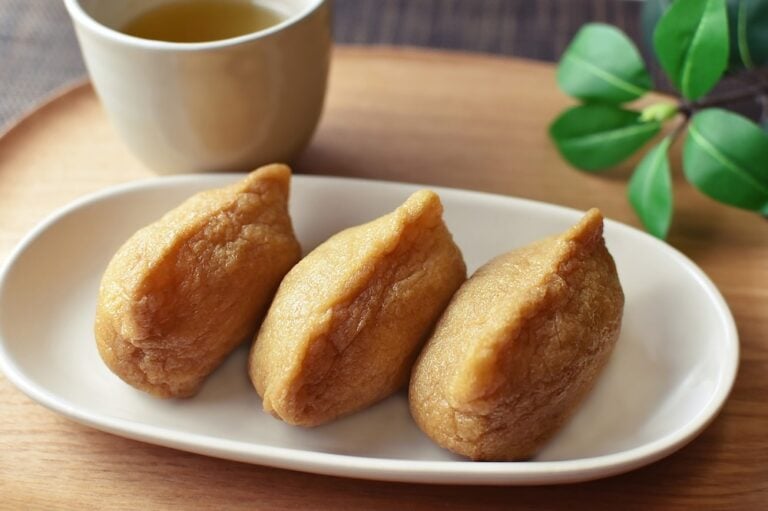
In the west, tofu often brings to mind uninspiring images of California soy burgers, sad beer-battered attempts at chicken nuggets, and a dull, flavorless diet. I know this because after trying countless recipes to substitute the meat in my diet back in the US, I was one of the people who had written off tofu as the protein choice of people with taste buds long deceased.
Until I came to Japan.
Once across the Pacific, I discovered endless iterations of the soybean product I had written off as the most average food ever. Nabe hotpot (鍋), sukiyaki (すき焼き), maabou-doufu (マーボー豆腐), agedashi-doufu (揚げ出し豆腐), inarizushi (いなり寿司), hiyayakko (冷奴), oden (おでん) and champuru (チャンプルー), among many others – unveiled the true potential of tofu, challenging its role as a mere meat substitute. As I tried all of these tasty dishes, I realized that this was one of the biggest mistakes I’d been making thus far. Rather than using tofu as a substitute, it was better off embraced as a star player. In fact, the majority of Japanese tofu recipes actually use meat as well. Not having been a staple of the American diet that I grew up eating, forcing tofu into these cuisines was an unfair way of judging it.
Japan, on the other hand, was first introduced to tofu in the 1st century as a Chinese ingredient. Thus, it has a long history of using tofu in stews, soups, stir fries, and more. Those centuries of crafting age-old techniques and flavor combinations has created a tofu culture that could change even the most hamburger-loving American’s mind.
Types of Tofu at the Grocery Store
One of the biggest reasons tofu offers so much more in Japan is the variety available for purchase. There are a myriad of textures and mouth feels that lend themselves best to different recipes.
Here are some of the different kinds of tofu commonly found in Japan, along with their Japanese names and recommended uses. From momen-doufu’s (木綿豆腐) resilience in stews to the delicate texture of kinugoshi-doufu (絹漉豆腐) in miso soup, each variety offers a unique culinary experience.
| Tofu Variety | Japanese Name | Best Use |
|---|---|---|
| Momen-doufu | 木綿豆腐(もめんどうふ) | Excellent in stews and soups, maintains its shape well |
| Yaki-doufu | 焼き豆腐(やきどうふ) | Ideal for grilling, retains shape in stews and soups |
| Kinugoshi-doufu | 絹漉し豆腐(きぬごしどうふ) | Perfect for miso soup or eating cold, has a silky texture |
| Oboro-doufu / Yose-doufu | おぼろ豆腐(おぼろどうふ)/ 寄せ豆腐(よせどうふ) | Extra soft, best enjoyed as-is, showcases tofu’s flavor |
| Atsuage | 厚揚げ(あつあげ) | Thick, deep-fried tofu that’s hearty enough to withstand long periods of simmering without falling apart; similar in density to momen-doufu and yaki-doufu |
| Aburaage | 油揚げ(あぶらあげ) | Another deep-fried tofu, this time thinly sliced and often used as a topping for Kitsune Udon |
Coming from the American Midwest, the only kinds of tofu I’d ever seen at my local grocery store were firm, semi-firm, and soft. Needless to say, my first trip to the grocery store for tofu had me sweating and frantically googling the kanji on every package. Over time, I’ve learned how to incorporate tofu into my cooking as its own entity, rather than seeing it just as a meat alternative.
Tofu Dishes to Try
One of my favorite dishes that incorporates yaki-doufu (焼き豆腐) is sukiyaki (すき焼き). It’s immensely popular in Japan, albeit seen as a bit of a treat. Despite this, it’s surprisingly easy to make. Yaki-doufu (焼き豆腐) is simmered in a soy sauce and mirin-based broth with strips of beef, enoki and shiitake mushrooms, onion, chrysanthemum, shirataki noodles, and bok choi cabbage. The ingredients are then dipped into raw egg (safe to eat in Japan!) before enjoying.

For a simpler option that really lets tofu shine on its own, look for hiyayakko (冷奴). It’s a refreshing and minimalist tofu dish that showcases the art of simplicity in Japanese cuisine. As with much of Japanese culture, the flavors and textures are kept simple, but of the best quality. Silken tofu is used as the base for toppings such as finely chopped green onions, grated ginger, and bonito flakes, all drizzled with a light soy sauce or ponzu dressing. This is a popular choice during hot summers in Japan as it’s another way to cool off. Light and easy to digest, it’s perfect for when it’s 90 degrees with 90% humidity.
Visit a Specialty Tofu Shop
While you can easily find all of the tofu mentioned so far in any Japanese supermarket, it’s worth paying a visit to a specialty tofu shop if you can find one. The tofu will be of the best quality, and in light of the decline in popularity of these stores, the owners will likely be thrilled to see you.
If you find yourself in Tokyo, you might consider Shinozaki Tofu Shop, located near Kanda Station. Or if you find yourself in Shinjuku City, try Kurihara Tofu Shop; it’s about a 13 minute walk from Yotsuya Station.
When in Osaka, look for Takahashi Shokuhin’s shops in Kuromon Market. The tofu is made fresh twice daily, and they offer specialty items like sesame tofu, egg tofu, and fresh soy milk.
Visiting a tofu shop isn’t something that’s on many people’s to-do list when visiting Japan, but it’s a great way to connect with the culture in a less touristy way. With younger generations of Japanese increasingly choosing the convenience of a supermarket over small-scale tofu shops, it’s worth giving them a shot before they become more difficult to find.
For all the love tofu gets in Japan, over 90% of its soybeans are imported, the majority of which come from the US. However, by the time you’ve been served a tofu dish in Japan, it will have become a distinctly Japanese creation – far from the meat substitute it’s portrayed as in the west. Whether you’re a lifelong tofu lover or hater or somewhere in between, giving Japanese tofu dishes a chance is a subtle, but meaningful way to connect with this country that you won’t regret.













